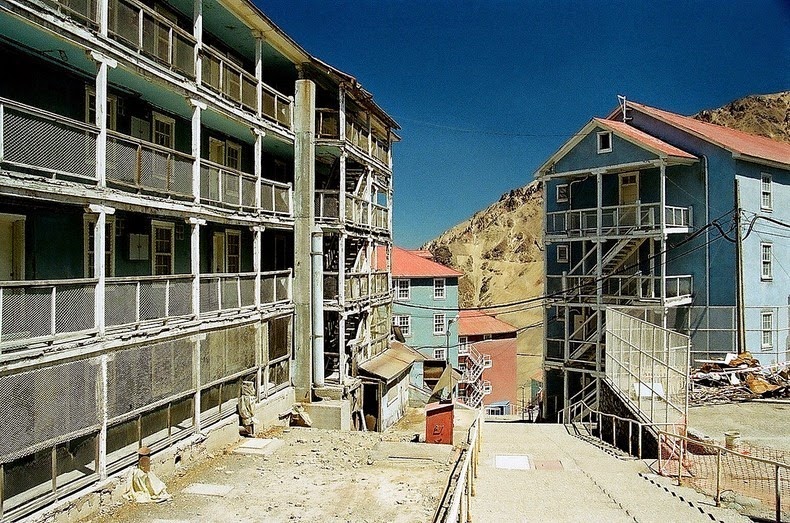Located on the slopes of the Andes in the commune of Machalí in Chile, at an altitude of 2,000 metres, lies the abandoned mining town of Sewell built by the Braden Copper company in 1905 to house workers of the world’s largest underground copper mine, El Teniente. It was the first copper company town in Chile, the largest producer of this metal in the world, and an outstanding example of the global phenomenon where company towns were established in remote parts of the world to extract and process natural resources. Sewell Mining Town is particularly notable for its contribution to the global spread of large-scale mining technology.
The town was built on the slope of the Andes with no flat roads, just a giant central staircase rising from the railway station. Along its route formal squares of irregular shape with ornamental trees and plants constituted the main public spaces or squares of the town. The buildings lining the streets are made of timber, often painted in vivid green, yellow, red and blue.

At its inception, Swell was nothing more than a small camp in the area closest to the mine with a hydroelectric plant, and lifts to transport copper and iron. From 1915, when the town was named Sewell in honor of Barton Sewell, partner of Braden, that it began to grow in infrastructure and architecture, taking on the characteristics of a city. This was further strengthened with the construction of a railroad that linked the mine to Rancagua, just in time to meet the increased demand for copper because of the First World War.
Soon, more than a hundred multi-coloured buildings arose that housed the miners. Hospitals, church, technical schools, social clubs, theatres, a bowling alley and a heated pool also went up. At its peak, Swell had 15,000 inhabitants. The narrow-gauge railroad brought all necessary supplies to the town, while the ore went out in huge buckets over a tramway system that snaked down the hill to the smelter in Caletones.
By the end of the 1960s, the copper industry was nationalized and became the property of the State. At this time, most people were moved out of the town to Rancagua in order to provide better facilities. The town was abandoned as a mining settlement in 1980, remaining in partial use as a dormitory for contractors' personnel, and this led to the modification of some of the buildings and further demolition of others. Demolition was finally halted at the end of the 1980s and in 1998 the town was declared a national monument. In 2006, it became a UNESCO World Heritage Site.
The mine however still functions and El Teniente now produces 3% of the worlds' copper.

















0 komentar:
Post a Comment